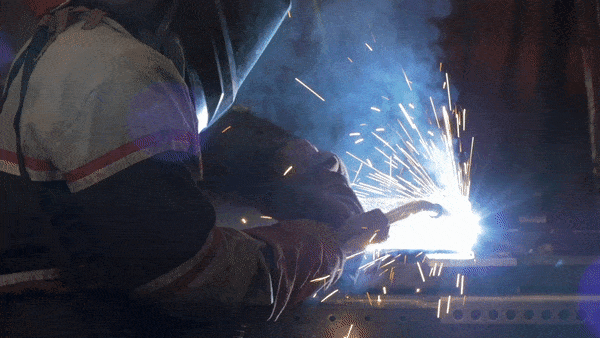
We’re in a trade war. Now what?
Share Now on:
We’re in a trade war. Now what?

The Basics
We’ll get to that, but first let’s boil down what a trade war is exactly. There’s no “official” definition, but it generally describes the back-and-forth between countries that are trying to restrict each other’s trade.
Months of escalating threats between the U.S. and China have become a reality. In July 2018, the U.S. began applying new tariffs on $34 billion worth of Chinese goods, including printers and industrial parts. China in turn slapped penalties on American products like cotton, soybeans and pork. In response, the U.S. has imposed more tariffs on Chinese products. Since May 10, 2018, America has placed tariffs of 25% on $250 billion worth of Chinese goods. Trump also recently stated plans to raise that 25% to 30% on Oct. 1, and tweeted that the U.S. will hit China with a tariff of 15% on an additional $300 billion worth of goods starting Sept. 1.
Why are we in a trade war?
The Trump administration has given different reasons for the various sets of tariffs it’s imposed, but they generally stem from the “five pillars” set out in its trade agenda:
- a trade policy that supports national security
- strengthening the American economy
- negotiating trade deals that work for all Americans
- enforcing and defending U.S. trade laws
- strengthening the multilateral trading system
U.S. tariffs on imports
-
Chinese products
- Rate:
- 25%
- Dollar value:
- $250 billion
- Applies to:
- Over 6,000 Chinese products
-
Steel
- Rate:
- 25%
- Imports in 2017:
- $29 billion
- Applies to:
- All foreign countries except Argentina, Australia, Brazil, Canada, Mexico and South Korea.
-
Aluminum
- Rate:
- 10%
- Imports in 2017:
- $17 billion
- Applies to:
- All foreign countries except Argentina, Australia, Canada and Mexico.
Retaliatory tariffs on U.S. goods
-
China
- Affects over 5,000 products including:
- pork
- tobacco
- whiskey
- Dollar value:
- $110 billion
-
The European Union
- Affects over 100 products including:
- orange juice
- whiskey
- motorcycles
- Dollar value:
- $3.4 billion
-
Turkey
- Affects 22 products including:
- whiskey
- coal
- autos
- Dollar value:
- $533 million
-
India
- Affects 28 products including:
- apples
- almonds
- lentils
- Dollar value:
- $240 million
How does this affect me?
The frustrating answer is that it all depends. Because while you may see clear increases on basic goods (Coke has already said it’s raising U.S. soda prices because of tariffs), it’s difficult to calculate exactly how these tariffs will filter through the economy. Depending on your income bracket, you might see your food bill increase between $100 and $300 a year if there’s an all-out trade war, according to Kadee Russ, a former Obama White House economist and an economics professor at the University of California, Davis.
There are also some common consumer products that could go up in price, like dishwashers, flat-screen TVs and clothing.
How does a trade war end?
Not well. Turns out there are usually no winners in a trade war. Monica de Bolle, a senior fellow at the Peterson Institute for International Economics, told us that when economists examined the global aftermath of a trade war, they found that “jobs were lost” and “growth was hit.”
Take, for example, the tariffs George W. Bush imposed on steel back in 2002. They were lifted much sooner than expected because even jobs in non-steel sectors were hit hard since they used steel indirectly.
“The losses for the economy were a lot bigger than whatever the politicians thought they would gain from instituting those tariffs in the first place,” Bolle said.Paragraph
And also look at the Smoot-Hawley Tariff Act from the 1930s, which placed tariffs on over 20,000 imported goods. Bolle said that the measure affected “every single country” and that it probably prolonged the Great Depression.
Read all of our ongoing trade coverage here.
There’s a lot happening in the world. Through it all, Marketplace is here for you.
You rely on Marketplace to break down the world’s events and tell you how it affects you in a fact-based, approachable way. We rely on your financial support to keep making that possible.
Your donation today powers the independent journalism that you rely on. For just $5/month, you can help sustain Marketplace so we can keep reporting on the things that matter to you.



















